Why Oatmeal is an Excellent Choice for Diabetics
Oatmeal has long been recommended for people with diabetes, and for good reason. This whole grain breakfast option offers several benefits that make it an ideal start to your day.
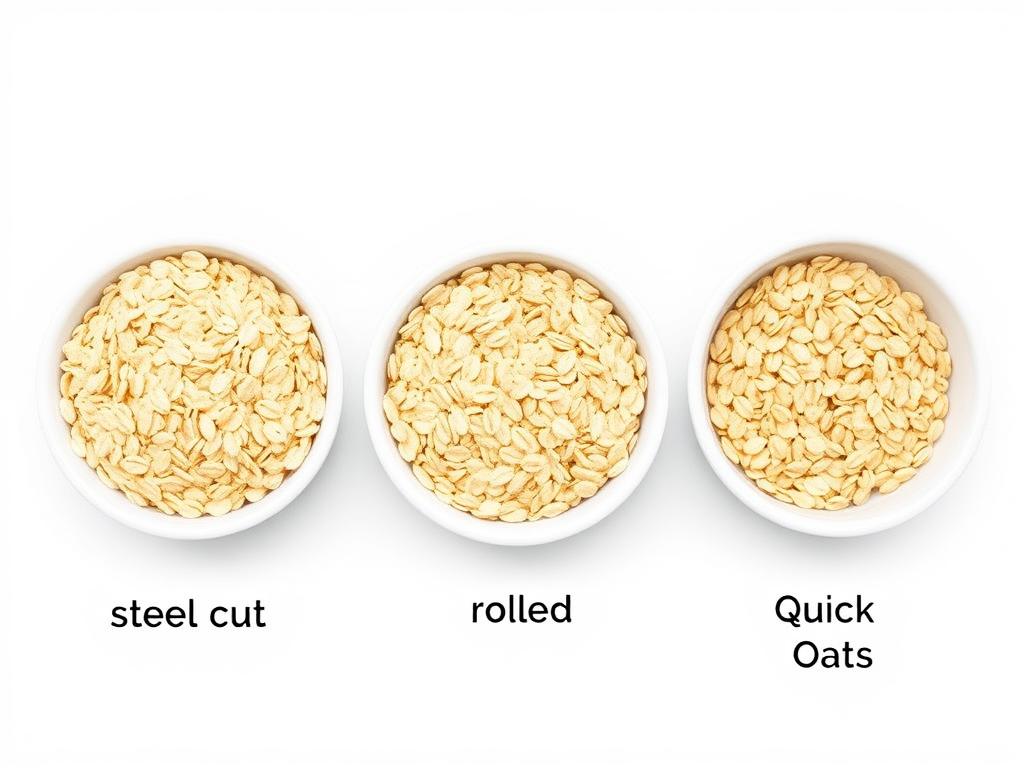
Rich in Beneficial Fiber
Oats contain a special type of soluble fiber called beta-glucan, which forms a gel-like substance in your digestive system. This helps slow down carbohydrate absorption, preventing rapid spikes in blood sugar levels. Just one cup of cooked oatmeal provides about 4 grams of fiber, contributing significantly to your daily needs.
Low Glycemic Index
Steel cut and rolled oats have a lower glycemic index compared to many other breakfast options. This means they cause a more gradual rise in blood sugar rather than a sudden spike. The less processed the oats, the lower the glycemic impact, making steel cut oats an especially good choice for diabetics.
Promotes Heart Health
People with diabetes have a higher risk of heart disease. Oatmeal’s soluble fiber helps reduce LDL (bad) cholesterol levels, supporting heart health. This makes oatmeal a dual-purpose food that addresses multiple health concerns for diabetics.
Nuts and Seeds Toppings
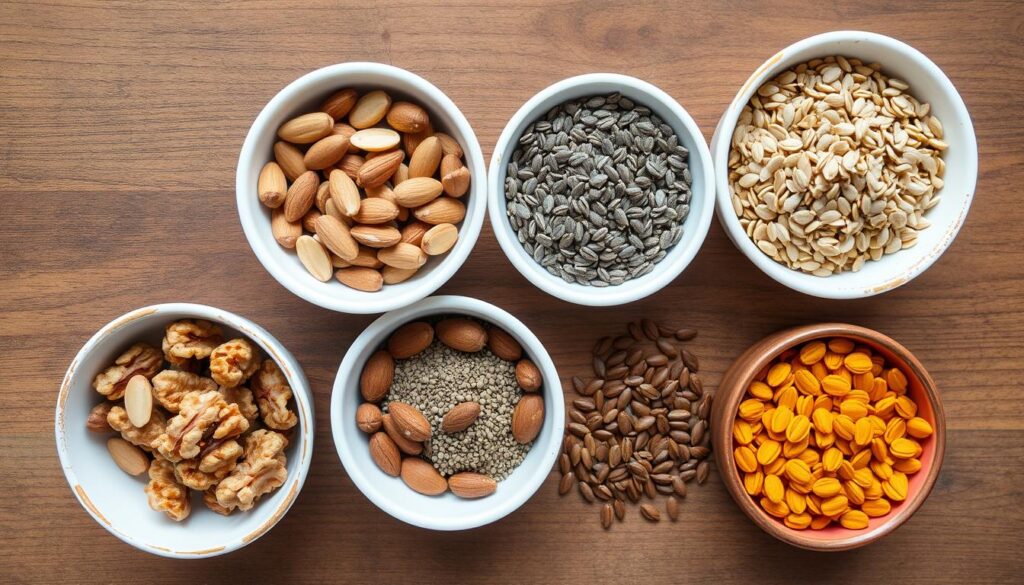
1. Walnuts
Walnuts are packed with omega-3 fatty acids and antioxidants that help reduce inflammation. They add a satisfying crunch to your oatmeal while providing healthy fats that slow digestion and help prevent blood sugar spikes. For the best flavor, lightly toast a tablespoon of chopped walnuts before sprinkling them over your oatmeal.
2. Chia Seeds
These tiny powerhouses are rich in fiber, protein, and omega-3 fatty acids. Just one tablespoon of chia seeds contains nearly 5 grams of fiber, which helps slow digestion and prevent blood sugar spikes. Mix them directly into your oatmeal during cooking or sprinkle on top – they’ll add a pleasant texture and subtle nutty flavor while boosting the nutritional profile.
3. Ground Flaxseed
Flaxseeds are excellent sources of alpha-linolenic acid (ALA), a plant-based omega-3 fatty acid. They’re also rich in lignans, which have antioxidant properties. Always use ground flaxseed (rather than whole) to ensure your body can absorb the nutrients. Stir one tablespoon into your cooked oatmeal for a mild, nutty flavor and additional fiber.
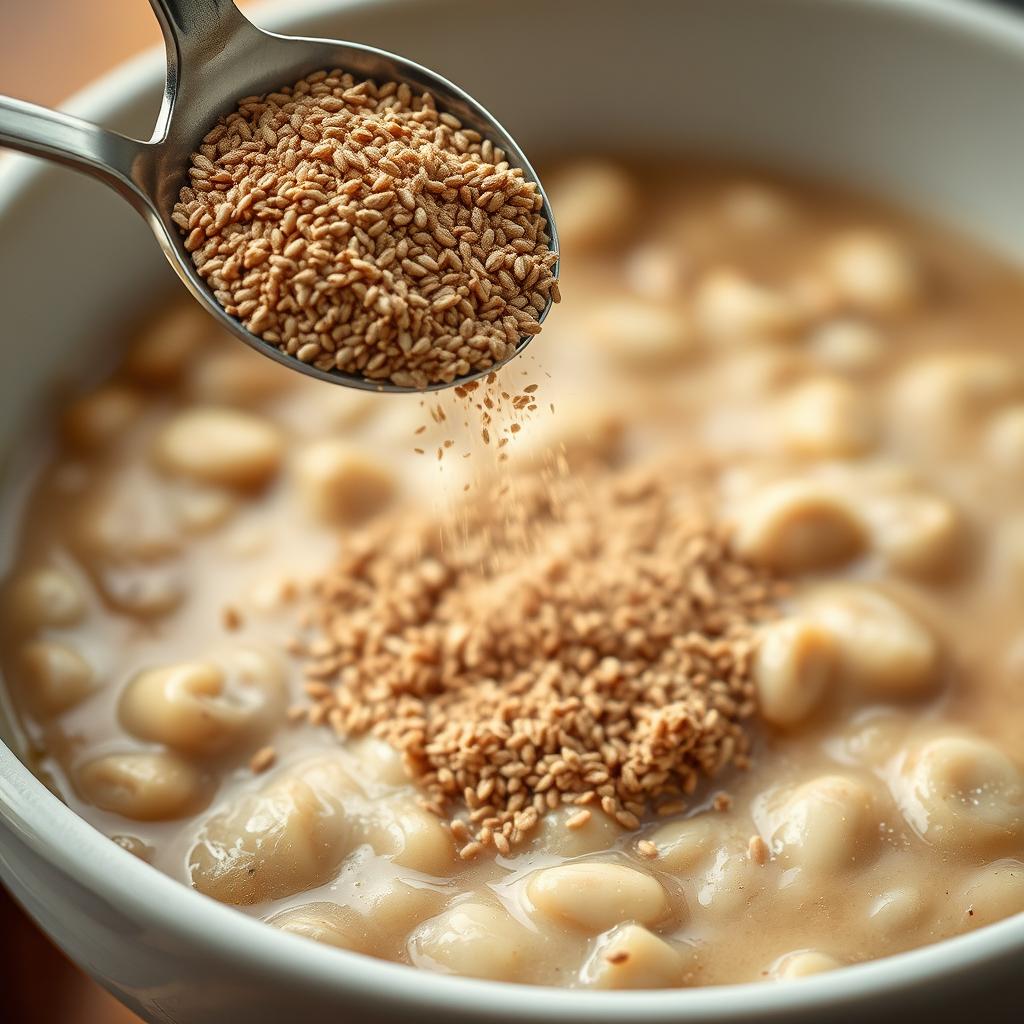
4. Almond Butter
Unsweetened almond butter provides healthy fats and protein that help balance blood sugar levels. A tablespoon stirred into hot oatmeal creates a creamy, rich texture and nutty flavor. Look for varieties with no added sugar or oils for the healthiest option. The protein and fat content helps keep you fuller longer, preventing mid-morning hunger and potential snacking.
5. Pumpkin Seeds
Also known as pepitas, pumpkin seeds are rich in magnesium, which may help improve insulin sensitivity. They’re also packed with protein, healthy fats, and fiber. Toast a tablespoon of pumpkin seeds lightly to enhance their flavor before adding to your oatmeal. Their slightly chewy texture and mild flavor make them an excellent addition to your breakfast bowl.
Fresh and Frozen Fruit Toppings
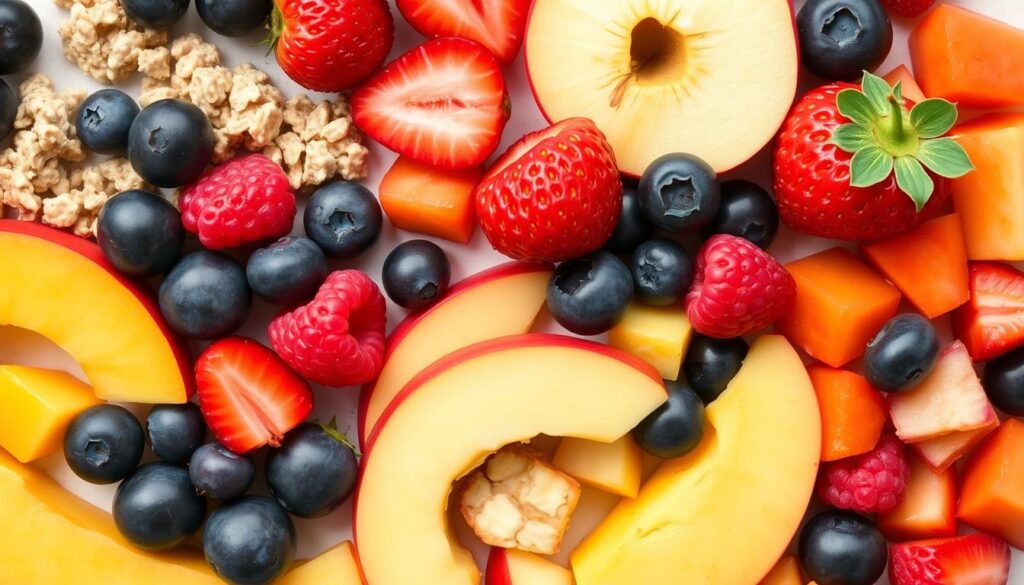
6. Berries (Blueberries, Strawberries, Raspberries)
Berries are lower in sugar compared to many other fruits, making them ideal for diabetics. They’re also packed with antioxidants and fiber. Fresh or frozen (without added sugar), berries add natural sweetness and vibrant color to your oatmeal. For extra flavor, lightly mash some berries to create a natural “sauce” that distributes the berry flavor throughout your oatmeal.
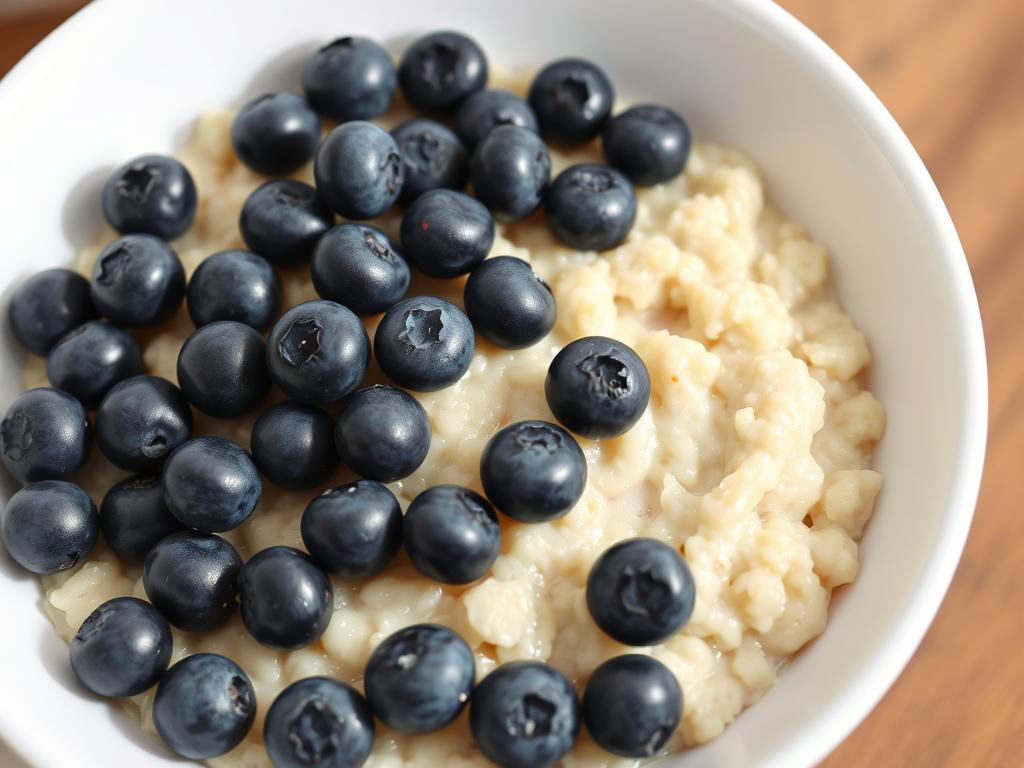
7. Diced Apple with Cinnamon
Apples contain pectin, a type of soluble fiber that can help regulate blood sugar levels. Dice a small apple and cook it briefly with a sprinkle of cinnamon until slightly soft. The cinnamon not only adds flavor without sugar but also has been shown to improve insulin sensitivity. This combination creates a warm, comforting topping reminiscent of apple pie.
8. Unsweetened Applesauce
For a quicker option, unsweetened applesauce provides natural sweetness without added sugars. Look for varieties made with just apples and cinnamon, or make your own by pureeing cooked apples. Stir a quarter cup into your oatmeal for moisture and flavor without significantly impacting blood sugar levels.
9. Sliced Peaches
Fresh or frozen peaches (without added sugar) add natural sweetness and a pleasant texture to oatmeal. They’re relatively low on the glycemic index and provide vitamins A and C. Dice a small peach and add it to your oatmeal during the last minute of cooking, or use thawed frozen peaches when fresh aren’t in season.

Spices and Flavor Enhancers
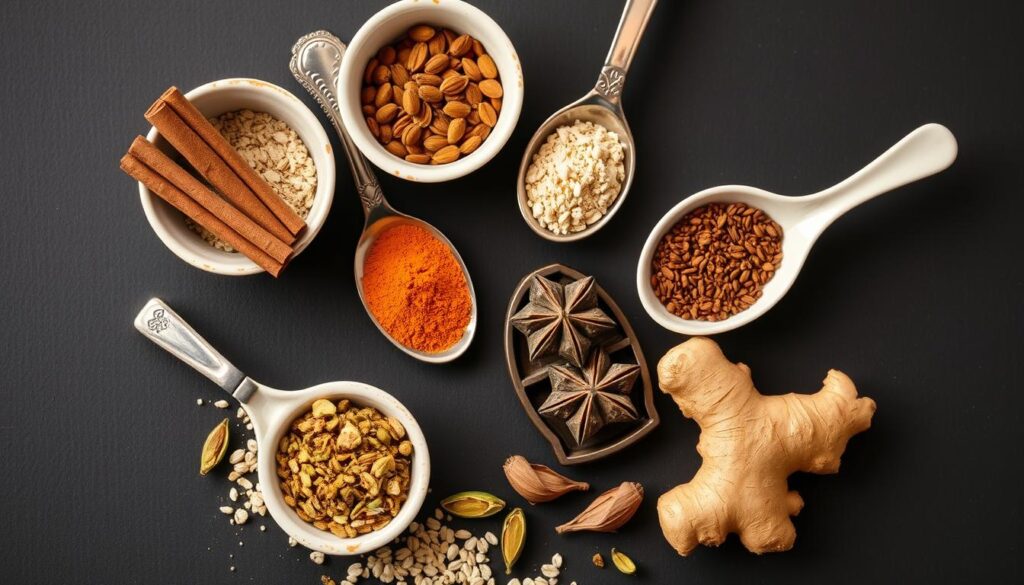
10. Cinnamon
Cinnamon isn’t just a delicious addition to oatmeal; it may also help improve insulin sensitivity and lower blood sugar levels. Just a half teaspoon added to your oatmeal during cooking infuses the entire dish with warm flavor. Ceylon cinnamon (also called “true” cinnamon) is particularly recommended for diabetics who use cinnamon regularly, as it contains less coumarin than Cassia cinnamon.
11. Vanilla Extract
A few drops of pure vanilla extract add wonderful aroma and flavor that can satisfy your sweet tooth without any sugar. Add a quarter teaspoon to your oatmeal during the last minute of cooking to preserve the delicate flavor. The warm, sweet notes of vanilla can make plain oatmeal taste like a treat.
12. Cocoa Powder
Unsweetened cocoa powder is rich in flavanols that may help improve insulin sensitivity. Stir a tablespoon into your oatmeal during cooking for a chocolate flavor without added sugar. Pair it with a small amount of natural sweetener like berries for a balanced taste. The rich chocolate flavor can make your breakfast feel indulgent while still being diabetic-friendly.
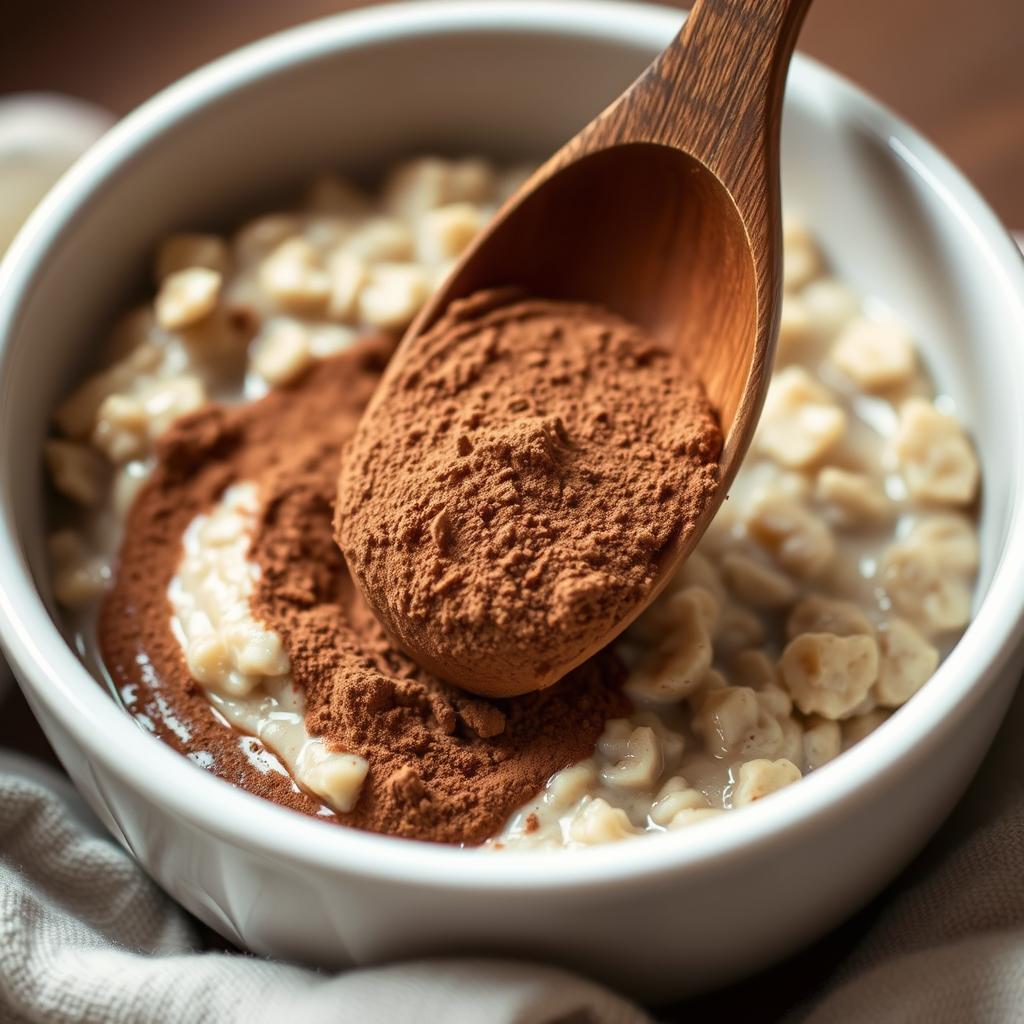
Savory Oatmeal Toppings
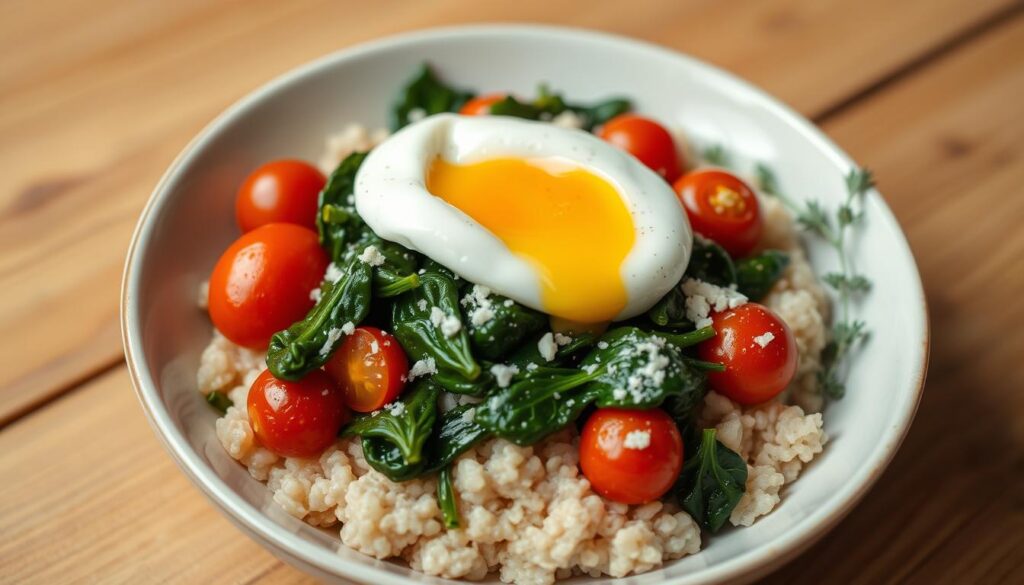
13. Poached Egg
For a savory twist, top your oatmeal with a poached egg. The protein and fat in the egg help slow digestion and prevent blood sugar spikes, while the runny yolk creates a creamy sauce when mixed with the oatmeal. Add a sprinkle of black pepper and perhaps some chopped fresh herbs for a complete savory breakfast that will keep you satisfied for hours.
14. Sautéed Vegetables
Turn your oatmeal into a savory meal by adding lightly sautéed vegetables like spinach, mushrooms, and bell peppers. These non-starchy vegetables add nutrients, fiber, and flavor without significantly impacting blood sugar. Season with herbs like thyme or rosemary and a small amount of grated Parmesan cheese for a complete breakfast that feels more like a risotto than traditional oatmeal.
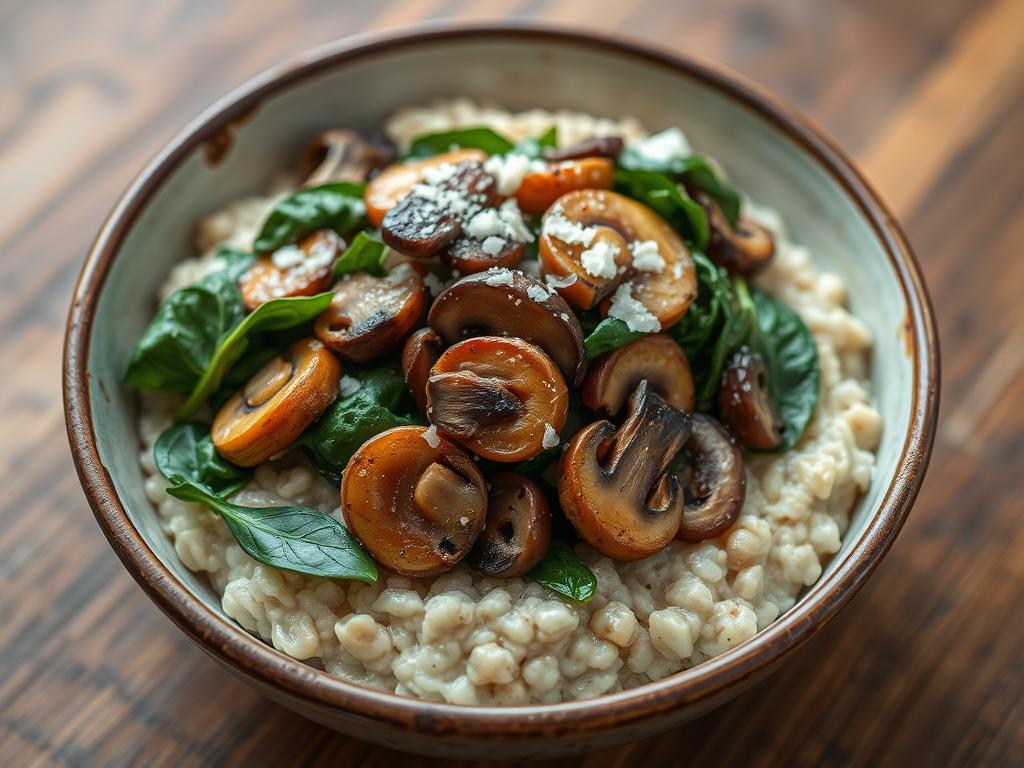
15. Avocado and Tomato
Diced avocado adds healthy monounsaturated fats that help stabilize blood sugar levels, while cherry tomatoes provide freshness and acidity. Season with a pinch of salt, pepper, and perhaps some red pepper flakes for heat. This combination creates a creamy, flavorful savory oatmeal that’s reminiscent of avocado toast but with the added benefits of oats for diabetics.
Oatmeal Toppings to Avoid

While focusing on healthy additions, it’s equally important to know which common oatmeal toppings can negatively impact blood sugar levels:
Sweeteners to Avoid
- Brown sugar or white sugar
- Honey, even though it’s “natural”
- Maple syrup
- Agave nectar
- Sweetened dried fruits
Other Problematic Additions
- Flavored yogurts with added sugars
- Sweetened nut butters
- Chocolate chips
- Sweetened plant milks
- Pre-packaged oatmeal flavor packets
Even natural sweeteners like honey and maple syrup can cause blood sugar spikes in people with diabetes. Instead, rely on the natural sweetness from fruits and spices to flavor your oatmeal without compromising your health goals.
Diabetic-Friendly Oatmeal Recipe Template

Here’s a customizable template for creating your perfect diabetic-friendly oatmeal. Mix and match toppings from the categories above to create endless variations!
Base Oatmeal Recipe
| Ingredients | Measurements | Instructions |
| Steel cut oats or rolled oats (not instant) | 1/2 cup dry | 1. Combine oats and water in a pot 2. Bring to a boil, then reduce heat 3. Simmer until desired consistency (about 15-20 minutes for steel cut, 5-7 minutes for rolled oats) 4. Add your chosen toppings |
| Water | 1 1/2 cups | |
| Pinch of salt (optional) | To taste |
Topping Combinations to Try
Berry Nutty Oatmeal
- 1/4 cup mixed berries
- 1 tbsp chopped walnuts
- 1/2 tsp cinnamon
- 1/4 tsp vanilla extract
Nutrition: Approximately 245 calories, 35g carbs, 10g fat, 7g protein, 8g fiber
Chocolate Almond Joy
- 1 tbsp unsweetened cocoa powder
- 1 tbsp almond butter
- 1 tbsp unsweetened coconut flakes
- 5-6 fresh raspberries
Nutrition: Approximately 270 calories, 30g carbs, 15g fat, 9g protein, 9g fiber
Savory Breakfast Bowl
- 1 poached egg
- 1/4 avocado, diced
- 5 cherry tomatoes, halved
- 1 tbsp grated Parmesan
- Fresh herbs and black pepper
Nutrition: Approximately 290 calories, 28g carbs, 16g fat, 12g protein, 6g fiber
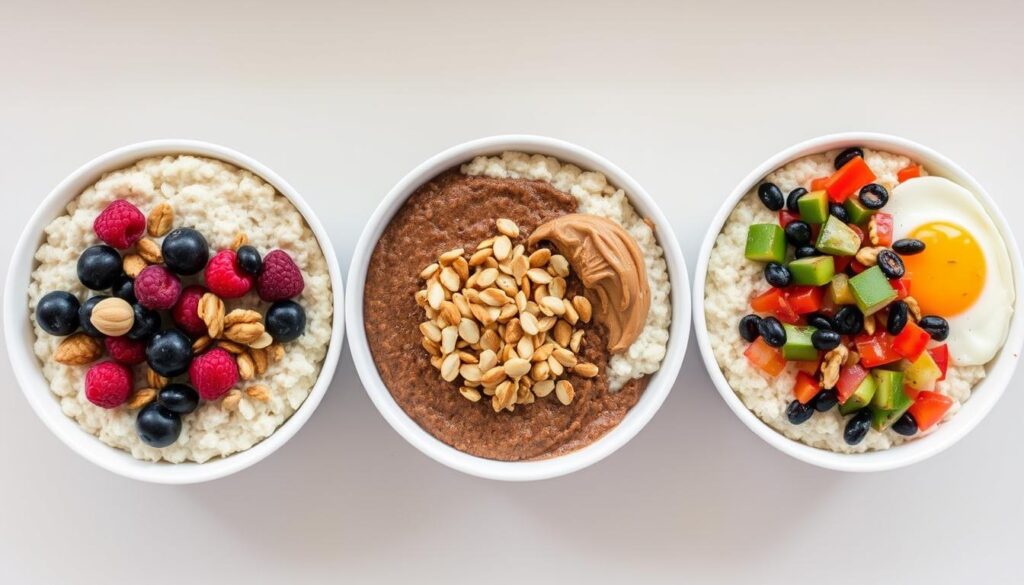
Enjoying Oatmeal as Part of a Diabetic-Friendly Diet
With these 15 sugar-free topping ideas, you can enjoy a different oatmeal creation every day without getting bored or compromising your blood sugar management. Remember that portion control still matters – even healthy foods can affect blood glucose when consumed in large quantities. Start with a moderate portion of oatmeal (1/2 cup dry) and experiment with different topping combinations to find your favorites.
By choosing steel cut or rolled oats and pairing them with protein, healthy fats, and fiber-rich toppings, you’re creating a balanced breakfast that can help maintain steady blood sugar levels throughout the morning. This approach not only supports diabetes management but also contributes to overall health and wellbeing.
Get Your Free Diabetic-Friendly Oatmeal Guide
Want to take these ideas with you? Download our free printable guide with all 15 sugar-free oatmeal toppings, plus bonus recipes and a meal planning template to make your mornings easier.

What’s your favorite way to enjoy oatmeal while managing diabetes? Try these toppings and discover new flavor combinations that make breakfast both delicious and supportive of your health goals!

